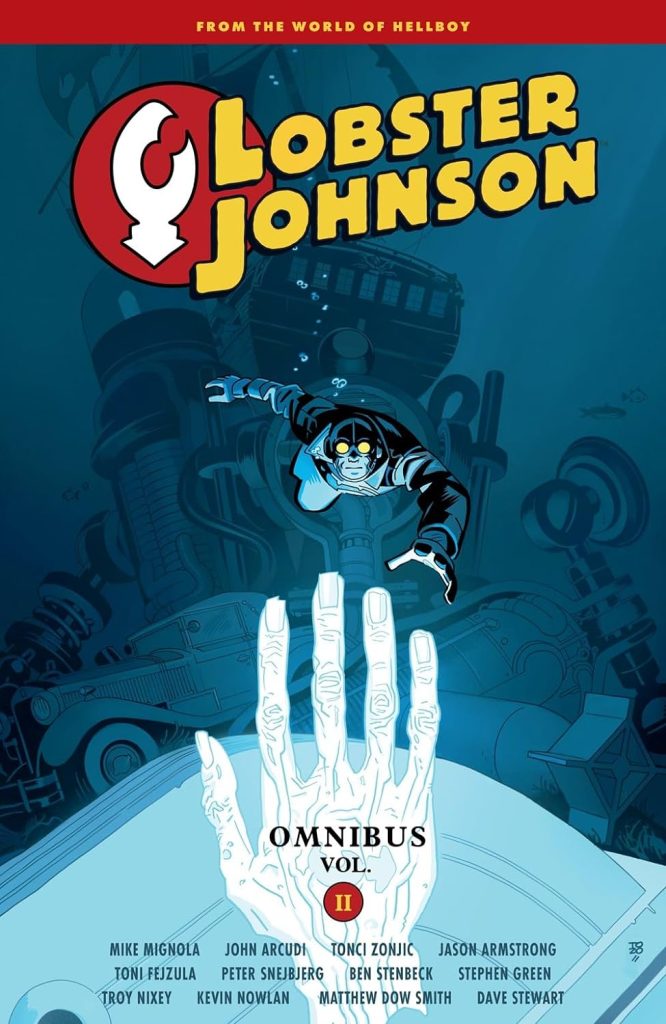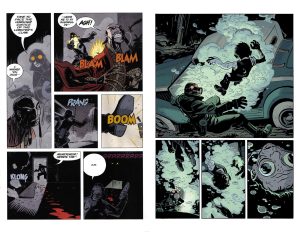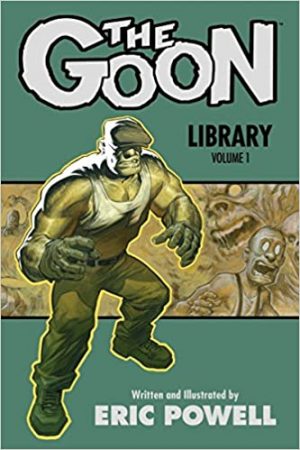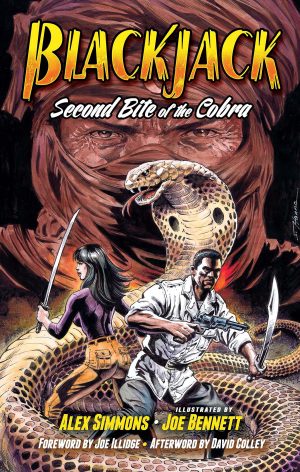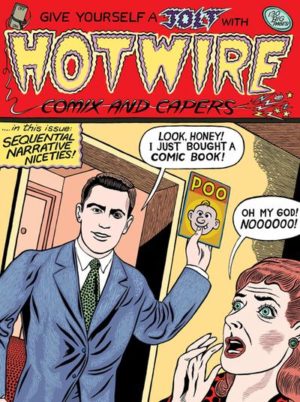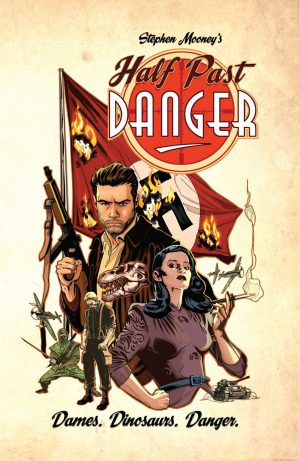Review by Karl Verhoven
This second Lobster Johnson Omnibus gathers the remaining three trade paperbacks into a massive package. Over 400 pages of story, in fact. It’s far more fragmented than Vol. I, featuring one five chapter outing, a pair clocking in at three chapters, and five self-contained chapters.
The longest of them was originally the first Lobster trade, The Iron Prometheus, and more than any subsequent Lobster outing it ties in directly to mystical dabblings directly affecting the greater Hellboy universe, despite being set in 1937. When Mike Mignola and John Arcudi supplied the plot there was no guarantee sales would justify a second solo outing, so they gleefully throw in every pulp reference that occurs. There are Nazi spies, the hint of cannibals in the sewers, ancient Chinese legends, a villain familiar to readers of B.P.R.D., a thug with a giant mechanical lobster claw, monstrous serpents and most of all Lobster himself, a force of nature gleefully branding the foreheads of criminals he’s battered. He’s also notably more talkative than in later outings, when the likes of “It’s a house full of cowards. Assassins eager to taste justice from the Lobster’s claw” is more his style.
Jason Armstong (sample spread left) draws this seedy extravaganza, with his kinetic pages benefiting greatly from Dave Stewart’s astute colouring. The same can be said for his contribution to the art of Tonči Zonjić, who’s an even stronger designer over the two stories combined in paperback as The Pirate’s Ghost and The Metal Monsters of Midtown. Zonjić is another great storyteller and fills the pages with period detail. It’s stunning art (sample right).
In those stories Mignola and Arcudi focus more on Lobster’s supporting cast, the people who assist him with research, investigation, design and engineering, and bolster a recurring a villain. However, despite the entertainment, there’s a feeling of discarding some characters too easily.
There’s little connection of mood or style between the five self-contained stories originally collected as A Chain Forged in Life, although the returning dead are the problem in stories drawn by both Peter Snejbjerg and Stephen Green. They’re both superb artists, but then almost everyone who draws anything Mignola’s involved with is well selected. As they’re so stylistically separated, each reader will have a different favourite, and while noting a story about abducting Santa seems a homage to The Goon as drawn by Troy Nixey and is more predictable, all five are fun.
Based on current prices getting the paperback of the five shorts alone will now cost roughly the same as a new copy of this Omnibus, and no-one who loved Lobster’s two-fisted action in Vol. I will have complaints.
